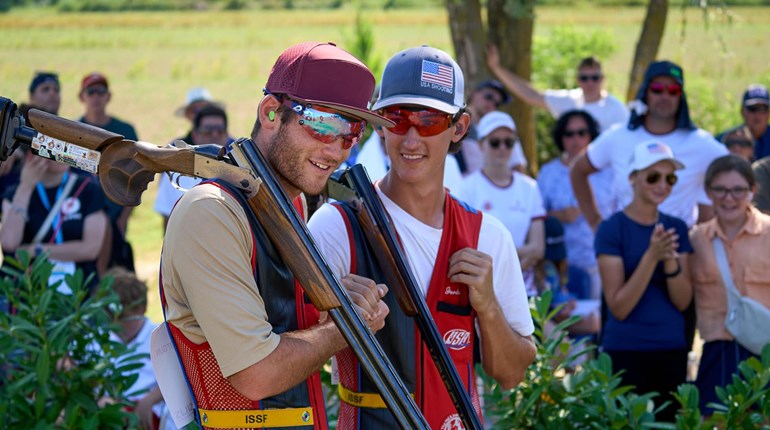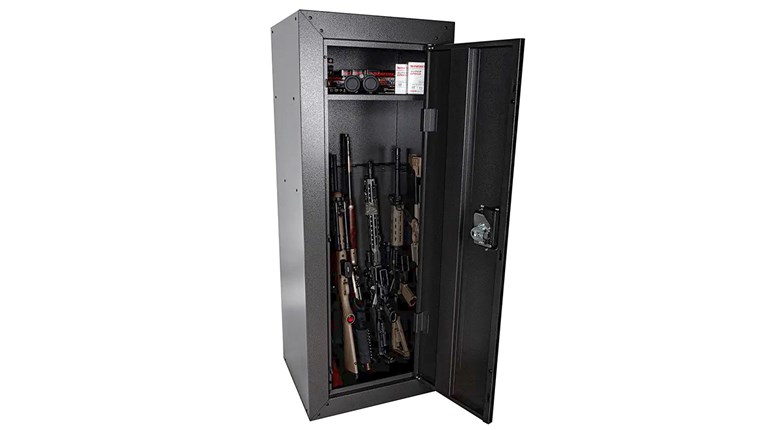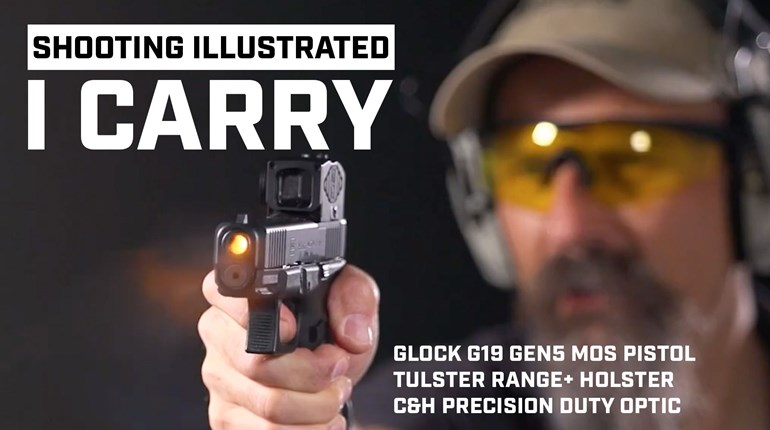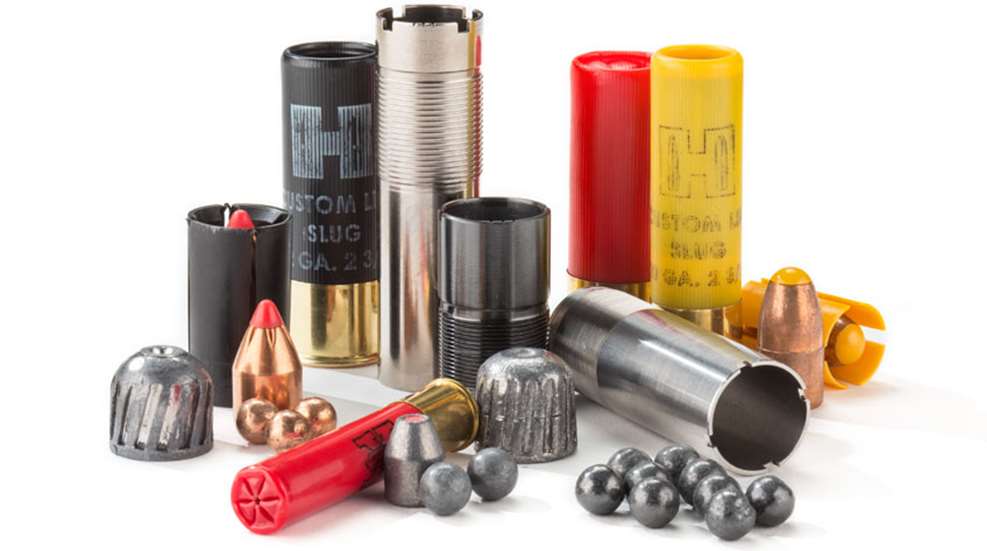
A shotgun is a tool that shouldn’t be overthought. Made for short-range work, most times it should simply be stuffed with birdshot, buckshot or slugs, pointed at a target and fired. But if you delve into the infinite combinations of chokes, payloads and shot sizes, the shotgun suddenly seems like more math than magic. So, for those geeks of the gauge, here’s a compendium of facts, specs and rules-of-thumb. Tear it out and laminate it for your range bag—or ball it up and yell “Pull!”
Gauge: The number of round lead balls of the same diameter as the bore that add up to equal 1 pound. For example, 12, .729-inch-diameter balls equal 1 pound. Therefore, a shotgun having a bore of .729-inch diameter is a 12 gauge. (The .410-bore wasn’t invented in England, so Americans took liberty in calling it simply by its actual diameter measurement, in inches. But, if it were a gauge, it would be about 67 gauge.)
Bore Dimensions: (Note: Exact bore dimensions vary across manufacturers and nations.) Typically, choke constrictions are defined as follows. However, a shotgun’s actual choke, regardless of its gauge, depends on its patterning results on a 30-inch patterning board at 40 yards. Cylinder “choke” actually means the barrel has no constriction.
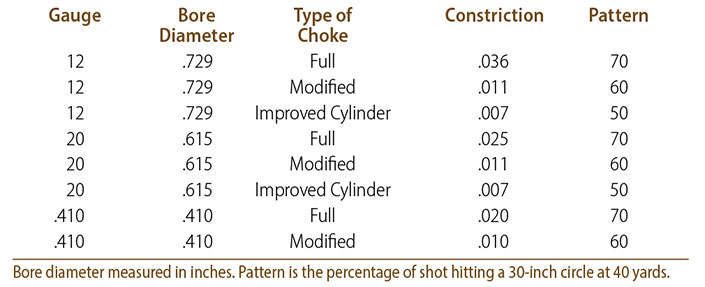
Shot Spread: While not exact, a full-choke shotgun, regardless of gauge, will spread approximately 1 inch per yard with round, lead shot. An improved cylinder choke will spread about 1.75 inches per yard.
Shot String: Because pellets are forced into and out of a shotgun’s barrel in a column, the resulting pattern is “strung out” in a horizontal spray wherein some pellets arrive at the target before and after others.
Pellets and Penetration: If all else is equal, smaller shot does not penetrate better than larger shot. Rather, material that is heavier than lead (of the same diameter) retains more energy and penetrates better, while materials like steel that are lighter than lead penetrate worse.
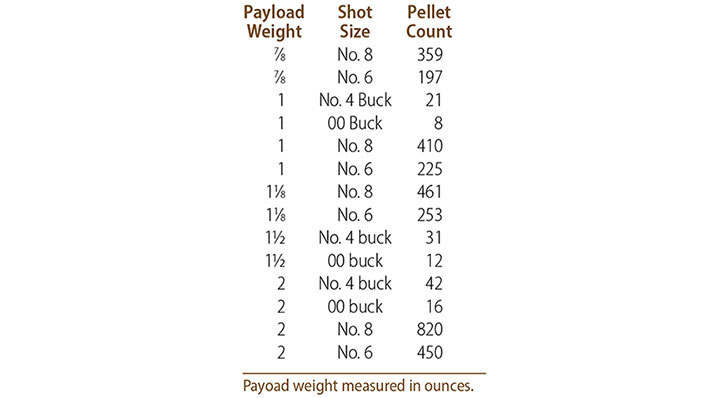
Payload: Payload, or total weight of the shot charge, is the measurement (in ounces) used for most shot sizes except buckshot, which uses pellet count. Double-aught buck loads generally contain nine pellets; 3-inch loads contain 12, and 3½-inch loads contain 18. Heavier payloads equal denser patterns, but not necessarily greater energy. Energy is a product of payload times velocity.
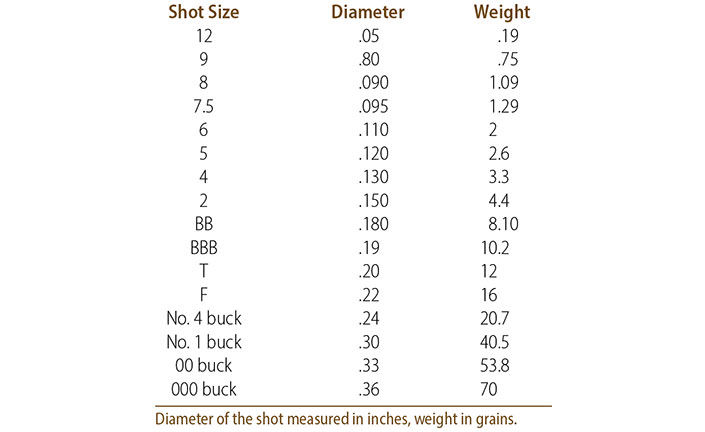
Dram Equivalent: Shotshells were once loaded with blackpowder, measured in drams. When smokeless powder was introduced, loaders needed blackpowder-to smokeless powder equivalents, so the term “dram equivalent” was coined. It’s a measurement of the amount of powder in a shotshell. But, today there are myriad powders, so this measurement is very rough, and that is why many companies have begun listing the load’s velocity instead. For reference, a common 12-gauge dram equivalent for a skeet load is 2 3⁄4, whereas some heavy 3 1⁄2-inch loads contain 4 1⁄4 dram equivalent. If the box says “Max,” it means it has the maximum amount of powder the manufacturer feels is safe.
Shotgun Energy: Most shotshell energy measurements are calculated using payload weight at the muzzle. But, as a pattern spreads out and loses energy due to the spherical pellets’ poor ballistic coefficient, some pellets will strike the target in different areas or fail to strike it altogether. At longer ranges, the energy gained by using larger pellets becomes increasingly important. For example, at the muzzle a 1-ounce load of No. 8s launched at 1,300 fps has the same energy as a 1-ounce slug launched at 1,300 fps. But, at 50 yards, the slug will deliver much more energy to the target.
Barrel Length: Modern shotshell powders completely burn in the first 13 to 16 inches of a barrel. Because it takes a split-second longer for pressure to build, shotshell loads reach maximum velocity at roughly 20 inches of barrel length. Barrels longer than this do not produce significant velocity gains.
Slug Types
Foster: “Full-bore” slugs that generally feature grooved rifling that, when fired from a smoothbore, stabilizes it during fight. Its hollow base makes the slug front heavy to stabilize it and to form a gas seal against the bore to enhance velocity and accuracy.
Brenneke: These full-bore slugs feature external ribs that aid to spin the slug when fired, helping stabilize it. A wad made of plastic or felt is attached to the slug’s rear portion. When fired, it forms a gas seal and also helps stabilization.
Sabot: Featuring a bullet-like slug that is smaller than the bore diameter, the projectile fits into a plastic sleeve called a sabot, which impacts a rifled shotgun barrel’s lands and grooves to impart spin. When it leaves the barrel, it falls away, leaving only a spinning bullet. Sabot slugs are generally lighter, yet faster and more accurate than other slug types.
Choke codes, Benelli-style:
*****/IIIII cylinder
****/ IIII improved cylinder
III/ modified
II/improved modified
*/ I full
Common Slug Loads

*Weights listed in ounces, Muzzle Velocity (MV) listed in fps, Muzzle Energy (ME) listed in ft.-lbs.
Recoil Comparison
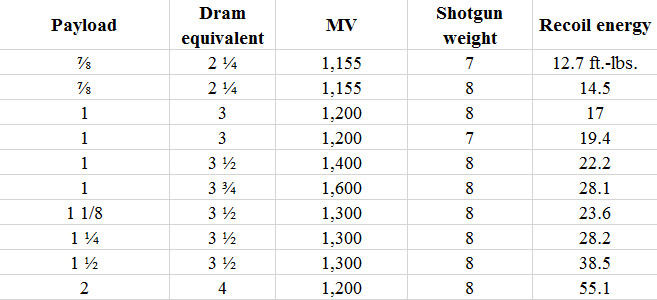
Notes: Payload weights listed in ounces, Muzzle Velocity (MV) listed in fps, shotgun weight listed in pounds, Recoil energy listed in ft.-lbs. Low-recoil buckshot loads (sometimes branded as “tactical” or “law-enforcement”) often feature eight pellets instead of nine to reduce payload mass and therefore recoil.)














